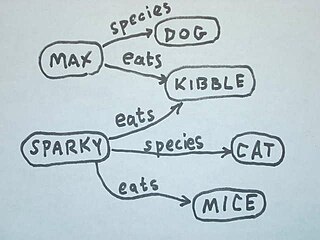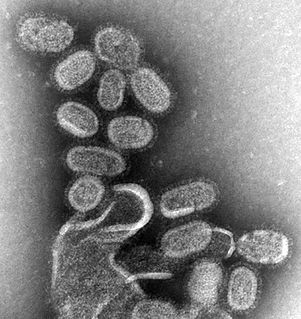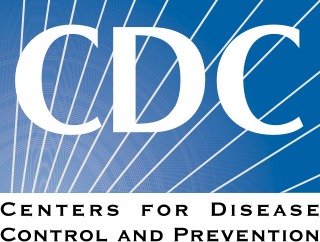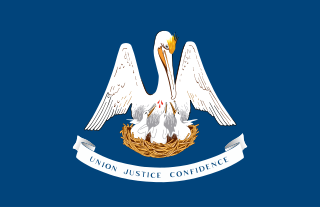
Zoonoses are infectious diseases that can be naturally transmitted between animals and humans.
In computer science and information science, an ontology encompasses a representation, formal naming, and definition of the categories, properties, and relations between the concepts, data, and entities that substantiate one, many, or all domains.
Epidemiology is the study and analysis of the distribution and determinants of health and disease conditions in defined populations.
The science of epidemiology has matured significantly from the times of Hippocrates, Semmelweis and John Snow. The techniques for gathering and analyzing epidemiological data vary depending on the type of disease being monitored but each study will have overarching similarities.
Public health surveillance is, according to the World Health Organization (WHO), "the continuous, systematic collection, analysis and interpretation of health-related data needed for the planning, implementation, and evaluation of public health practice." Public health surveillance may be used to "serve as an early warning system for impending public health emergencies; document the impact of an intervention, or track progress towards specified goals; and monitor and clarify the epidemiology of health problems, to allow priorities to be set and to inform public health policy and strategies."

James Alexander Hendler is an artificial intelligence researcher at Rensselaer Polytechnic Institute, United States, and one of the originators of the Semantic Web.
A semantic wiki is a wiki that has an underlying model of the knowledge described in its pages. Regular, or syntactic, wikis have structured text and untyped hyperlinks. Semantic wikis, on the other hand, provide the ability to capture or identify information about the data within pages, and the relationships between pages, in ways that can be queried or exported like a database through semantic queries.

In software, semantic technology encodes meanings separately from data and content files, and separately from application code.
Public health informatics has been defined as the systematic application of information and computer science and technology to public health practice, research, and learning. It is one of the subdomains of health informatics.
Simple Knowledge Organization System (SKOS) is a W3C recommendation designed for representation of thesauri, classification schemes, taxonomies, subject-heading systems, or any other type of structured controlled vocabulary. SKOS is part of the Semantic Web family of standards built upon RDF and RDFS, and its main objective is to enable easy publication and use of such vocabularies as linked data.
Disease surveillance is an epidemiological practice by which the spread of disease is monitored in order to establish patterns of progression. The main role of disease surveillance is to predict, observe, and minimize the harm caused by outbreak, epidemic, and pandemic situations, as well as increase knowledge about which factors contribute to such circumstances. A key part of modern disease surveillance is the practice of disease case reporting.
Oracle Spatial and Graph, formerly Oracle Spatial, forms a separately-licensed option component of the Oracle Database. The spatial features in Oracle Spatial and Graph aid users in managing geographic and location-data in a native type within an Oracle database, potentially supporting a wide range of applications — from automated mapping, facilities management, and geographic information systems (AM/FM/GIS), to wireless location services and location-enabled e-business. The graph features in Oracle Spatial and Graph include Oracle Network Data Model (NDM) graphs used in traditional network applications in major transportation, telcos, utilities and energy organizations and RDF semantic graphs used in social networks and social interactions and in linking disparate data sets to address requirements from the research, health sciences, finance, media and intelligence communities.
Semantic interoperability is the ability of computer systems to exchange data with unambiguous, shared meaning. Semantic interoperability is a requirement to enable machine computable logic, inferencing, knowledge discovery, and data federation between information systems.
Surveillance for communicable diseases is the main public health surveillance activity in China. Currently, the disease surveillance system in China has three major components:
TIRR Memorial Hermann is a 134-bed rehabilitation hospital, rehabilitation and research center, outpatient medical clinic and network of outpatient rehabilitation centers in Houston, Texas that offers physical rehabilitation to patients following traumatic brain or spinal injury or to those suffering from neurologic illnesses. In 2014, U.S. News & World Report named TIRR Memorial Hermann to the list of America’s Best Hospitals for the 25th consecutive time.

Google Flu Trends was a web service operated by Google. It provided estimates of influenza activity for more than 25 countries. By aggregating Google Search queries, it attempted to make accurate predictions about flu activity. This project was first launched in 2008 by Google.org to help predict outbreaks of flu.
Flutrack is a system that detects influenza symptoms by processing and displaying influenza related Twitter messages. Flutrack platform gathers and visualizes tweets every 20 minutes in real time. This open platform and its API allow users and developers to extend this project and take influenza detection to higher levels. The platform could work not only with Twitter but with any data provider.
Data philanthropy describes a form of collaboration in which private sector companies share data for public benefit. There are multiple uses of data philanthropy being explored from humanitarian, corporate, human rights, and academic use. Since introducing the term in 2011, the United Nations Global Pulse has advocated for a global "data philanthropy movement".











